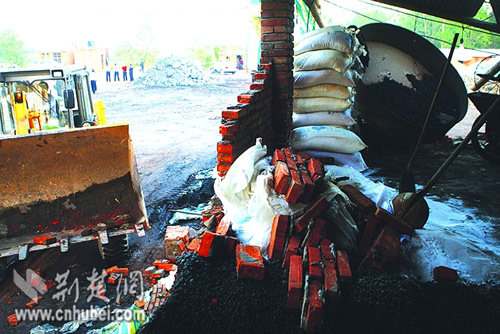A skin rash that recently affected more than 1,000 cotton farmers in Jianli County, Hubei Province, was caused by boll worms, an official said yesterday.
The rash was initially blamed on the release of vanadium from nearby illegal factories.
Wen Qingsong, vice-director of the Hubei environmental protection bureau, told China Daily the skin rash "is not related to vanadium according to tests done by the provincial health department".
 |
|
An illegal vanadium plant is closed down by local authorities in Jianli County, Hubei Province, on October 14, 2008. A skin rash that recently affected more than 1,000 cotton farmers in the county was initially blamed on the release of vanadium from nearby illegal factories. |
During investigations, police detained the owners of three illegal vanadium plants in the county.
The media had reported farmers started suffering from rash-like symptoms in March when local industrialists and those from nearby Hunan province opened plants to smelt vanadium, a highly profitable alloy element.
Some of the illegal plants had failed to install treatment facilities for gas emissions and wastewater.
The plants face fines of up to 500,000 yuan (US$73,000) for environment pollution, and will be shut down," Wen said.
In the town of Sanzhou, vanadium discharged in wastewater by illegal plants is 78 times higher than the safety standard, Wen said.
The authorities had tried to stop the illegal plants from operating in 2006 but their efforts failed.
An official with the county's information office, who declined to give his name, said after a crackdown on illegal vanadium plants in Hunan, they moved to Jianli county in Hubei.
Li Jigao, head of the county, said the growth of these illegal plants was the result of "poor law enforcement by government departments".
(China Daily October 21, 2008)